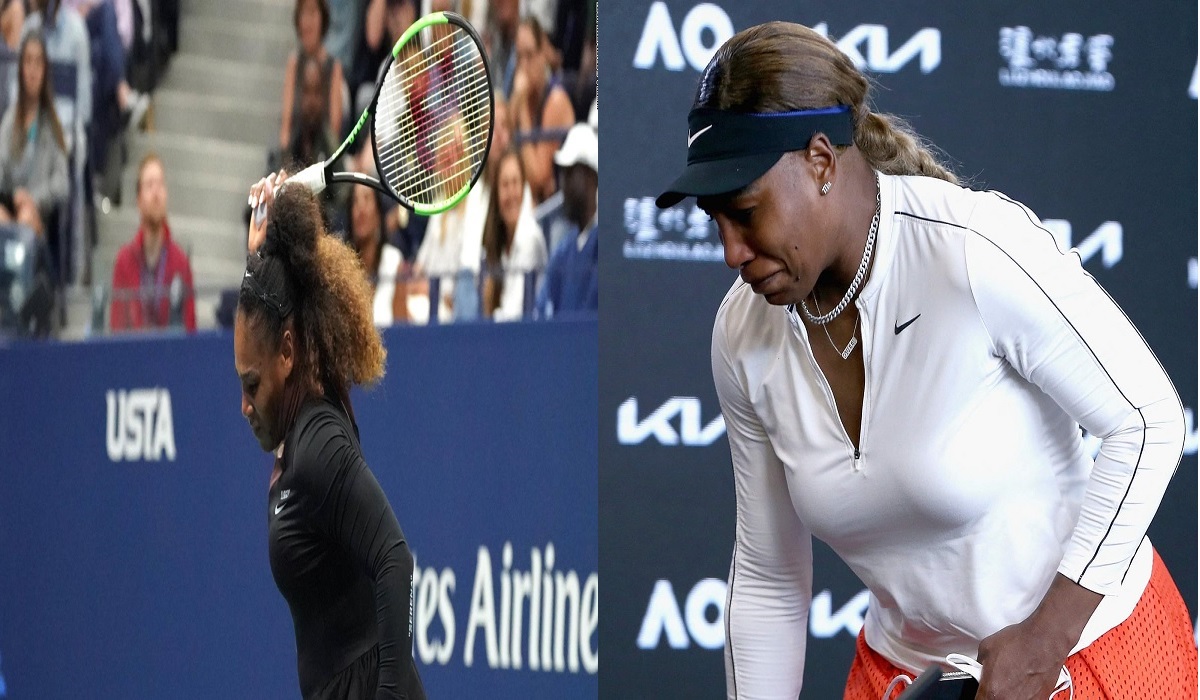NEWS
Sadness has replaced outrage as Serena Williams sees Osaka’s arrival as a threat

Few sporting controversies now look as silly as the one which followed Naomi Osaka’s win over Serena Williams in the 2018 US Open women’s singles final.
Obviously shellshocked by being prevented from equaling Margaret Court’s record number of Grand Slam titles on home turf by an underdog, Williams decided to lash out afterwards at umpire Carlos Flores whose “sexism” she alleged to have contributed to her defeat.
The Twitterati then upped the stakes by claiming that racism was to blame for the result as the officials obviously didn’t want to see a black woman succeed. In their haste to hop on the bandwagon they passed little heed on the fact that Osaka was the daughter of a Haitian father and a Japanese mother.
“It wasn’t the happiest moment for me,” admitted the new champion afterwards. It seemed an awful pity that the occasion had been marred in this manner for a 20-year-old woman winning her first Grand Slam. What if she didn’t win another?
Any worries on this count have been assuaged. Osaka’s win over Jennifer Brady in the Australian Open final on Saturday of last week makes it four Grand Slams and marks her out as the outstanding player of the current era.
Her latest winning campaign also included an emotional post-match Williams interview. This time Williams seemed sorrowful rather than angry after her semi-final defeat by Osaka (pictured).
It seemed to dawn upon her that the Court record she’s been chasing since 2017, and which once seemed easily within her grasp, might elude her.
The former number one had played some of her best tennis in years to beat world number two Simona Halep in the quarter-final but she had no answer to Osaka, who disposed of her in straight sets before doing the same to surprise package Brady in the final.
One of the ironies surrounding the 2018 final incident is that Osaka has subsequently become one of the most high profile sporting supporters of the Black Lives Matter movement. On her way to victory in last year’s US Open she wore a mask bearing the name of a different black victim of violence in each of her seven games.
That powerful message contributed to her being named one of the Sportspersons of the Year in Sports Illustrated. Not bad for someone previously portrayed as a beneficiary of structural racism within tennis umpiring.
The Williams era offered the opportunity to see a great champion in action but her dominance became as boring as that of Novak Djokovic’s in the men’s game currently.
It was followed by a democratic period with 13 different players winning Grand Slams between 2016 and 2020. This was highly entertaining but its chaotic nature cast some doubts over the quality of the competition.
Now Osaka has burst out of the pack, as has Halep by adding the 2019 Wimbledon title to her 2018 French Open. What was striking about the Australian Open was how well the top players were going.
This was most evident in an epic fourth round when Osaka had to come from one set down to score a 7-5 win in the third over a resurgent Garbine Muguruza, who looked Williams’ most likely heiress when winning the 2016 French Open and 2017 Wimbledon.
That fourth round also featured terrific three-setters between Williams and Belarus’ Aryna Sabalenka and Halep and teenage French Open champion Iga Swiatek. Another three-setter saw championship favourite and world number one Ashleigh Barty upset by Czech Karolina Muchova.
There’s both quantity and quality in women’s tennis at the moment. But for now Naomi Osaka is the one they’ve all got to chase.
She’s come a long way since being a disregarded footnote to the big story.
-

 NEWS3 years ago
NEWS3 years agoWho Are The Favorites To Win The 2021 Australian Open
-

 TENNIS3 years ago
TENNIS3 years agoRoger Federer Admits Wife Mirka And He Could’ve Divorced Without Her Selfless Call
-

 NEWS8 months ago
NEWS8 months agoUpdate: Venus Williams Finally Talks on Marriage
-

 TENNIS3 years ago
TENNIS3 years agoAndy Murray Reveals if His Kids Are Aware of What He Is Doing And His Comeback On Tour
-

 CELEBRITY3 years ago
CELEBRITY3 years agoAndy Murray’s private Surrey mansion to raise four children – see inside
-

 NEWS3 years ago
NEWS3 years agoDominic Thiem’s new girlfriend!
-

 CELEBRITY3 years ago
CELEBRITY3 years agoTennis Pro Naomi Osaka Gives Off Beach Bikini Vibes.
-

 CELEBRITY3 years ago
CELEBRITY3 years agoInside: Serena Williams’ Relationship With Her 9 Siblings






































